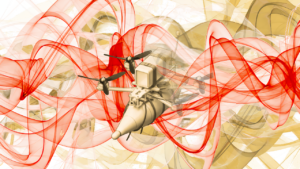Last Friday the New York Times reported that New York City is about to become a Department of Homeland Security testing ground for sensors designed to detect nuclear material that could be used in so-called “dirty bombs” [“New York to Test Ways to Prevent Nuclear Terror,” by Eric Lipton, 8 February 2007].
“Starting this spring, the Bush administration will assess new detection machines at a Staten Island port terminal that are designed to screen cargo and automatically distinguish between naturally occurring radiation and critical bomb-building ingredients. And later this year, the federal government plans to begin setting up an elaborate network of radiation alarms at some bridges, tunnels, roadways and waterways into New York, creating a 50-mile circle around the city.”
It doesn’t take much imagination to conjure up the mountains of data that could be collected daily from the thousands of vehicles entering New York City. Expand that cordon of sensors to other major U.S. cities and you begin to understand that manually monitoring is impossible. According to Lipton, if the NYC experiment is successful the system will be expanded.
“The effort, which could be expanded to other cities if proven successful, is a major shift of focus for the Department of Homeland Security. As it finishes installing the first generation of radiation scanners at the nation’s ports and land border crossings, the department is trying to find ways to stop a plot that would use a weapon built within the United States.”
According to the article, not everyone believes the sensor net is a good idea.
“Some members of Congress and antiterrorism experts are raising concerns that the initiative, like previous Homeland Security programs, could prove extraordinarily costly and provide few security gains. ‘This is just total baloney,’ said Tara O’Toole, a former assistant secretary at the Department of Energy during the Clinton administration, where she oversaw nuclear weapons safety efforts. ‘They are forgetting that no matter what type of engineering solution they try in good faith to come up with, this is a thinking enemy and they will look for a way around it.’ While Homeland Security officials repeatedly declined to estimate the costs of a nationwide detection system, agency documents show they might spend more than a billion dollars on the cargo-screening equipment alone. Local officials in New York are sparring with Homeland Security over a plan to immediately transfer to local and state authorities the burden of maintaining and operating the network of detection machines when it is completed within several years.”
Those are legitimate concerns. The objective, according to Vayl S. Oxford, director of the Domestic Nuclear Detection Office, is to complicate terrorist planning, not to eliminate the risk entirely.
“Mr. Oxford said he is aware of the concerns about costs, which is still the subject of negotiations, and the performance of the new detection machines. But with a threat like a nuclear attack, the country cannot afford to wait until all the details are worked out, he said. … The Domestic Nuclear Detection Office, among the newest agencies at Homeland Security, was established in April 2005, in response to criticism that efforts to combat nuclear terrorism were too disorganized. The office focuses on blocking two types of plots: a nuclear weapon or a dirty bomb. A nuclear attack by terrorists is considered unlikely, because of the difficulty of obtaining the required radioactive materials, such as highly enriched uranium. The detonation of a dirty bomb is considered much more feasible. It only requires dynamite or another conventional explosive to detonate a widely available radioactive source — like the cesium or cobalt in certain medical devices. The blast might cause injuries or deaths, but the radioactive residue would cover a two- to three-block area and not pose an immediate health threat. Possible panic and economic disruption could be among the most serious consequences, experts say. The Securing the Cities detection network, as the New York experiment is called, is intended to stop a nuclear or radiological threat as far away from a city as possible.”
Even critics have to admit that DHS is in a difficult position. It is criticized when it does nothing and it is criticized when it does something. The details of the new monitoring system are, of course, closely held, but the article reports:
“The network would most likely include truck inspection stations along highways approaching New York, which would be equipped with radiation detection devices, agency budget documents say. Devices might also be installed at highway tollbooths and at spots where rail, boat and subway traffic could be monitored. The detection equipment, some of which would be mobile, would be electronically connected and monitored so if a suspicious vehicle passed one spot without being stopped, it might be intercepted after passing another detector.”
As anyone who read the article about me in Esquire Magazine [“The Age of Resilience“] knows, how systems are connected and monitored is exactly what Oak Ridge National Laboratory’s SensorNet and Enterra’s ResilienceNet are about. The challenge is not just radioactivity monitoring in New York, or expansion of that system elsewhere. As Lipton’s article points out, there are other systems already in place that are also monitoring the environment for other threats.
“[Tara O’Toole, a former assistant secretary at the Department of Energy during the Clinton administration], pointed to Homeland Security’s BioWatch program, set up in about 30 cities in 2003 to monitor the air for a possible biological attack. The equipment was installed quickly, but there was no detailed plan in place for how to respond to positive alarms, which meant three weeks of confusion among Houston authorities in October 2003, after tularemia, a naturally occurring pathogen, was discovered. ‘There is this disconnect between these grand schemes for technology and reality,’ Ms. O’Toole said.”
The partnership between Oak Ridge National Laboratory and Enterra Solutions was designed to address the “disconnect between these schemes for technology and reality.” The Institute for Advanced Technologies in Global Resilience [IATGR] was also established to study the challenges associated with making the world more resilient using technology. One of those challenges is making sure that dangerous material isn’t available to terrorists in the first place.
“Laura S. H. Holgate, vice president at the Nuclear Threat Initiative, a Washington-based research group, said the government should put far more energy into a global effort to prevent nuclear materials from getting into the hands of terrorists.”
The tests underway in New York will look closely at false alarm rates, a challenge I have written about before [Homeland Security 2.0].
“The testing planned on Staten Island at the New York Container Terminal is intended to police concerns about false alarms. Three sets of new types of detection machines have been installed there. For the first time, such machines sound an alarm when something radioactive passes through, and simultaneously identify the radioactive isotope. That allows officials to distinguish between innocuous items that can emit low levels of radiation, such as granite or kitty litter, and real threats.”
Connecting the dots, reducing false alarms, notifying appropriate authorities, responding with the right equipment, etc. are challenges that still need addressing. DHS will undoubtedly be criticized for moving too slow by some and too fast by others. What taxpayers don’t want, regardless of DHS’ speed of advance, is massive waste of government funds. That is where Oak Ridge, Enterra, and IATGR hope to help. Tom Barnett also wrote a post about this article.




